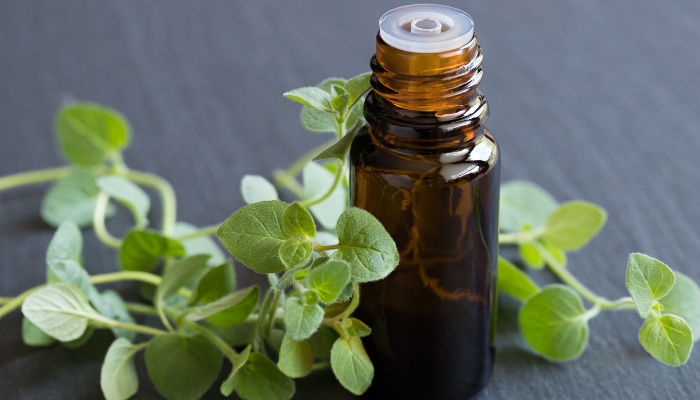Oregano is widely known as a powerful remedy for various ailments. It has established itself as one of the most effective herbs.
Some of those medicinal properties are exaggerations while others have been scientifically proven. So when you try to treat candida with oregano, are you following science or myth?
Oregano is rich in carvacrol and other terpenoid phenolic compounds that are quite effective against many fungal infections including candida. Consuming oregano in different forms can help kill the fungus responsible for candida and limit the activity of many pathogens in the body.
All that is fine and dandy, but how much oregano do you need to consume before you see an improvement in the condition and symptoms?
Read more to find out why oregano is effective against candida and how to get the most out of its therapeutic effects.
Oregano Oil for Candida – What To Know
Oregano oil has always been a potent medicine against many ailments. Thanks to the many antifungal compounds in the oil, oregano has shown promising results when used to treat candida.
Before we go any further, we need to shed light on candida as a disease and what causes it.
What Causes Candida Overgrowth?
Candida overgrowth is a common problem that results from chemical imbalances in the body.
To be more specific, the condition is often caused by exposure to certain chemicals either introduced into the body or produced within the body as a side effect of acute stress or poor diet.
Other common causes include recreational drugs, chemotherapy, birth control pills, or estrogen replacement therapy.
What Are the Signs of Candida?
Signs of candida include chronic fatigue, poor memory, severe allergies, itching in the genital area, sugar cravings, anxiety, depression, mood swings, and irritability among others.
What Are the Symptoms of Candida in the Gut?
Many symptoms of candida are focused in the gut area, which in turn affect the digestive system as a whole. These symptoms include bloating, constipation, or diarrhea.
Is Oregano Oil Antifungal?
Oregano oil is packed with antifungal compounds including carvacrol and other terpenoid phenols. This makes it an ideal and natural therapy to treat a wide range of fungal infections.
Unlike with other medicines and chemicals, the fungus doesn’t develop a tolerance or resistance to oregano.
That means you can keep using the right dosage of oregano oil to treat the fungal infection without the need to increase it or switch to other medicines.
How To Use Oregano Oil for Candida
To treat candida with oregano oil, you’ll need to consume the oil every day starting with a small dosage and building up to a regular dose.
Add 2 drops of oregano oil to a cup of water, mix well, and drink it twice daily. After about a week, increase the dose to 6 drops of oregano oil per day (two drops, three times a day). Stick to this dosage for 10 days, and then take a break.
How Long Does It Take for Oregano Oil To Kill Candida?
You can expect to see improvements with candida overgrowth about a week after taking oregano oil every day in the dosages described above.
However, you’ll need to take a break every 10 days. Talk to your doctor before starting the oregano oil treatment.

Healing Properties of Oregano Oil
To say that oregano oil is a medicinal miracle of nature sounds like hyperbole, yet time and time again, oregano oil proves effective against a wide range of health conditions.
Here’s the low-down of the benefits of oregano oil:
- Anti-Inflammatory Properties: Oregano oil reduces inflammation, which can help manage the symptoms of fungal and bacterial infections and speed up the healing process.
- Antibacterial Effects: The oil is quite effective against many bacteria strains, especially those that have shown resistance to antibiotics.
- Manage Cholesterol: Regular consumption of oregano oil has shown a reduction in the levels of LDL (bad cholesterol) in the blood and an improvement in the levels of HDL (good cholesterol).
- Digestive System: Issues with the digestive system have long been treated with oregano oil. These include bloating, stomach cramps, and irritable bowel syndrome (IBS) among others.
- Treating Acne: Oregano oil can improve acne conditions thanks to its anti-inflammatory and antibacterial properties.
Foods To Fight Candida
There’s a reason sugar cravings are one of the symptoms of candida. The fungus feeds on sugar and carbohydrates, so focusing on low-sugar fruits like lemon and berries can help you fight off candida overgrowth.
Leafy and non-starch vegetables are also good candidates to help you manage the fungal infection. These include kale, Brussels sprouts, cabbage, asparagus, tomatoes, spinach, eggplant, and onions.
Foods To Avoid With Candida
You should avoid sugar-rich, starchy, and carbohydrate-packed foods to prevent a flare-up of candida overgrowth. Don’t consume fruits like mangoes, dates, apples, bananas, grapes, or raisins.
Gluten is to be avoided as well, and you should refrain from consuming wheat, barley, or rye. Don’t consume processed meat or refined oils.
Related Questions:
Is Oregano Oil Good for Inflammation?
Oregano oil is packed with anti-inflammatory organic compounds, making it an ideal treatment for many health conditions. This helps the body fight off infections and speed up the process of healing.
How Much Oregano Oil Is Too Much?
Oregano oil, along with other essential oils, shouldn’t be consumed for more than 7 or 10 days at a time. The daily dosage shouldn’t exceed 6 drops of the oil.
Take a break from the treatment every 10 days. If you experience adverse side effects, stop the treatment immediately, and talk to your doctor.
Closing Thoughts
Oregano oil is an excellent treatment for fungal infections including candida. Unlike other medications, the fungus doesn’t develop a tolerance or resistance to the oil.
However, you shouldn’t consume oregano oil for more than 10 days. Take a break before resuming the treatment to avoid any possible side effects.
